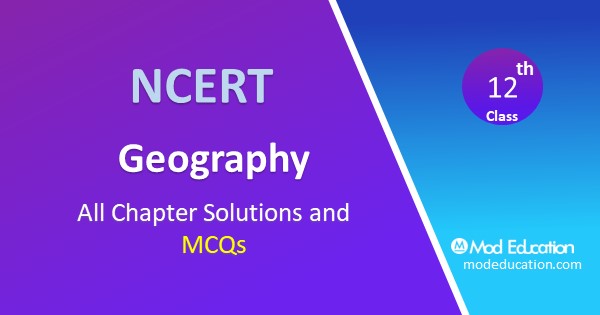Class 12 Geography Notes Chapter 17 : NCERT CBSE RBSE and Other State Board Solutions for Class 12 Geography Notes for Chapter 17 Mineral and Energy Resources Notes questions answers MCQs Download PDF

Class 12 Geography Notes Chapter 17 Mineral and Energy Resources
DISTRIBUTION OF MICA IN INDIA
1. India has monopoly in the production of mica producing about 60 % of the world total production.
2. About 90% of India mica is found in Jharkhand, Andhra Pradesh & Rajasthan.
3. Koderma in Jharkhand is the largest mica mining district of India.
NUCLEAR POWER is that power which is obtained by splitting of atoms. It is also called atomic power.
Important Nuclear Power stations in India are Tarapur in Maharashtra, Kalapakkam in Tamil Nadu, Kota in Rajasthan, Narora in U.P, Kaiga in Karnataka & Kakrapara in Gujarat.
NON FERROUS METALS: – Copper & Aluminium (Bauxite)
SPATIAL DISTRIBUTION OF COPPER & BAUXITE
Bauxite: – Major States – Orissa: Bolangir, Kalahandi, Sambalpur, Koraput, Jharkhand: Lohardaga
Other States are Gujarat, Chhattisgarh, M.P, Tamil Nadu, and Maharshtra
COPPER: MAJOR DEPOSITS are in Jharkhand, Chhattisgarh, Rajasthan & Karnataka.
MINOR DEPOSITS are in Andhra Pradesh, Tamil Nadu, U.P, Punjab & Sikkim.
NON CONVENTIONAL SOURCES OF ENERGY are those resources which are not conventional & would never be exhausted. They have been started to be used in recent times. They are solar energy, wind energy, tidal energy, geothermal energy, biogas & biomass.
PETROLEUM RESOURCES OF INDIA India has to import large quantities of petroleum every year to meet the growing demand. Large amount of precious foreign exchange is drained out from India every year for this purpose. Efforts are being made to reduce our dependence on heavy import.
DISTRIBUTION: Before 1956 only Digboi in Assam was the oil producing region but scenario has been changed after 1956. New oil deposits have been found in extreme western & eastern part of India.
Mumbai High lies 160 kms off Mumbai in the Arabian Sea. The region comprises Bassen, Mumbai High & Aliapet. (63%)
Gujarat has major oil fields of India. Nawagam, Ankleshwar, Kasol, Kosamba, Mehsana & Lunej (18%)
Assam’s important oil fields are Moran, Digboi & Naharkatia. (16%)
Other Oilfields: Oil & natural gas Commission has found large deposits of crude oil in the Krishna-Godavari & Cauvery Basin. (03%)
IMPORTANCE OF CONSERVATIONAN OF MINERALS
1. The conservation of mineral is important because Minerals are exhaustible resources. They are non-renewable.
2. Minerals are limited supply in India so conservation of minerals is essential for the survival of man.
3. Because there is a need to save the resources for the future generation.
HYDERABAD Is Known As MANCHESTER OF INDIA, COAL is often called the mother of all industries or BLACK GOLD
HYDEL POWER IN INDIA
- Hydel Power is an inexhaustible resource. It is a permanent resource as compared to coal & oil.
- In recent time Hydel power is becoming more & more important in the industrial economy. It has many advantages over fossil fuels.
- In India first power house was set up at Siva Samundram (Karnataka) on the river Cauvery in 1902.
- After independence, many power projects were started to develop hydroelectricity under multipurpose projects. Western Ghats, Tamil Nadu region & Himalayan region have favourable conditions for the development of Hydro power.
- India stands fifth in the world in potential power resources. Some hydel electricity projects are as under:
- Rihand Project, the Koyna Project, Balimel Project, Salal Hydel Project etc.
DESCRIBE THE UNEVEN DISTRIBUTION OF MINERALS IN INDIA.
1. Most of the metallic minerals in India are found in Peninsular Plateau region.
2. Over 97% of coal reserves occur in Godavari, Mahanadi & Damodar valley.
3. Minerals are generally concentrated in three broad belts in India:
- NORTH EASTERN PLATEAU REGION.
- SOUTH-WESTERN PLATEAU REGION.
- NORTH-WESTERN REGION.
EXPLAIN THREE CHARACTERISTICS OF MINERAL RESOURCES WITH REFERENCE TO INDIA.
- Most of the metallic minerals in India are found in Peninsular Plateau region.
- India is rich in iron ore, manganese, mica etc.
- India is poor in gold, lead, copper, petroleum.
NAME SIX AGENCIES THAT ARE INVOLVED IN THE EXPLORATION OF MINERALS IN INDIA.
In India systematic surveying, prospecting & exploration for minerals is undertaken by the Geological survey of India GSI.
OIL & NATURAL GAS COMMISSION
